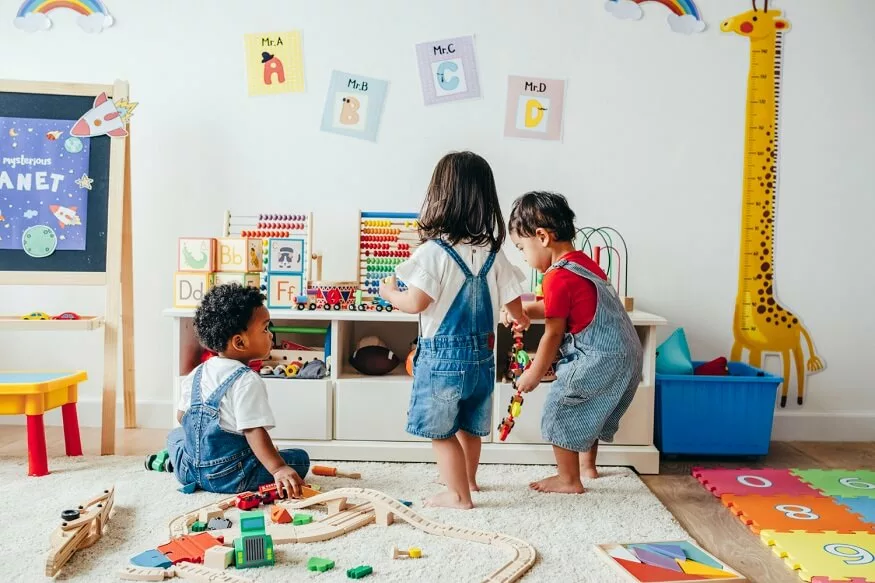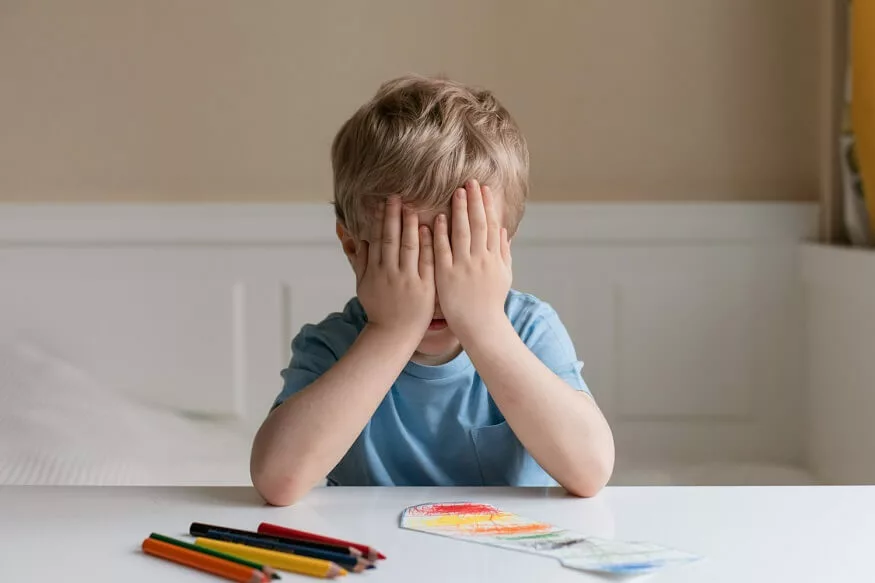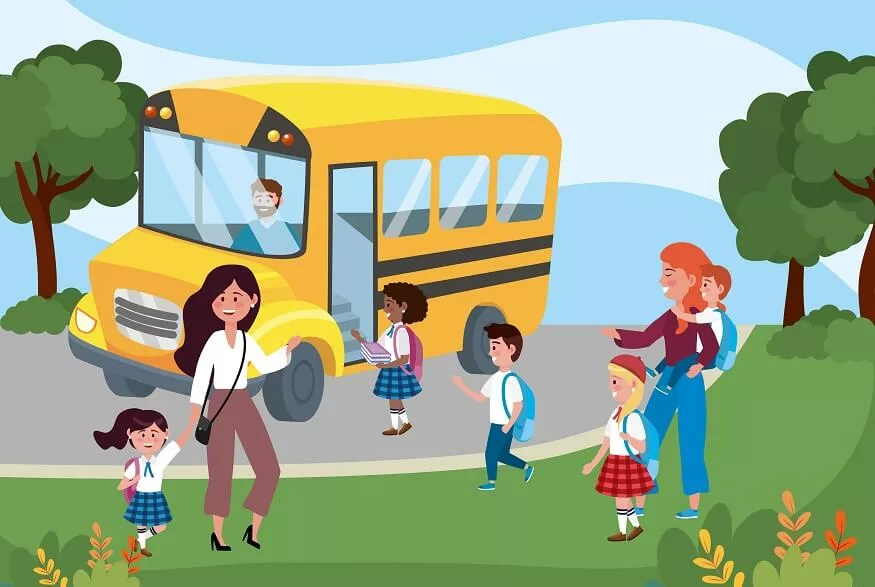The formative years of a child, typically aged between 3 and 5, are arguably the most influential in shaping cognitive, emotional, and social development. It’s during these years that they are introduced to the world of structured education through preschools. Over the years, educators around the globe have developed and refined several pre-primary teaching methods to make the learning experience more enriching for these young minds. This article sheds light on some of the most prevalent preschool teaching methods and techniques used worldwide.
Also Read: Teaching Moral Values through CBSE Textbooks
Teaching techniques for preschoolers
Teaching techniques for preschoolers are innovative approaches designed to nurture young minds, fostering creativity, curiosity, and foundational learning in a playful environment. Here are some preschool teaching methods and techniques used worldwide:
1. Montessori Method
Developed by Dr Maria Montessori, this is one of the most well-known preschool teaching methods. It focuses on child-centred learning, allowing children to take the lead in their own education. Instead of being fed information, children are encouraged to explore and discover on their own. The classroom environment is meticulously organised with materials that children can choose from based on their interests. The role of the teacher in this method is more of a guide or facilitator.
2. Reggio Emilia Approach
Originating from Italy, the Reggio Emilia approach is centred on the belief that children are competent, resourceful, and curious. This method emphasises the environment as the third teacher. Classrooms are filled with natural light and adorned with natural materials to inspire learning. This approach heavily promotes project-based learning where children explore topics in-depth for extended periods. Parents, teachers, and the community play a vital role in a child’s learning in this method, making it a collaborative effort.
3. Waldorf (Steiner) Education
Founded by Rudolf Steiner, the Waldorf method emphasises the importance of imagination in learning, aiming to cultivate a child’s intellectual, artistic, and practical skills in a holistic manner. The curriculum is designed to align with the developmental stages of a child. Storytelling, arts, crafts, music, and movement are integral parts of this teaching technique for preschoolers.
4. Bank Street Developmental-Interaction Approach
The Bank Street approach is rooted in the belief that children learn best when they’re actively involved in their learning and can relate it to their own experiences. The classroom environment is often set up as a miniature community where children can explore, experiment, and interact. Emphasis is on developing a child’s critical thinking, problem-solving skills, and social development.
5. HighScope Curriculum
This method involves active participatory learning, wherein children and adults learn side by side. Daily routines play a significant role, with a particular emphasis on “Plan-Do-Review” sequences. This ensures that children make decisions about what they will do, carry out their ideas, and then reflect on their activities. This method of teaching for preschool heavily promotes self-initiated learning.
Also Read: Innovative Teaching Techniques in ICSE Classrooms
Techniques Incorporated Across Methods
Apart from these structured methods, there are specific teaching techniques for preschoolers that educators worldwide adopt, irrespective of the foundational philosophy they follow:
Play-based learning: Recognised as one of the most effective teaching methods for pre-primary students, play-based learning integrates structured play with educational outcomes. It acknowledges the significance of a child’s natural curiosity and desire to make sense of the world around them.
Storytelling and puppetry: These are powerful tools in pre-primary teaching methods. They not only captivate a child’s attention but also enhance their vocabulary, listening skills, and comprehension abilities.
Field trips and real-world exploration: These provide children with hands-on experiences. Whether it’s a visit to the post office or a local farm, such trips supplement classroom learning and provide a practical understanding of various concepts.
Forest Schools: Originating in Denmark, forest schools believe in learning in an outdoor environment where children can connect with nature. Activities can include nature walks, storytelling, and outdoor play.
Circle Time: A technique where children and teachers sit in a circle and engage in discussions, songs, and storytelling. It’s a time for community building and shared learning.
Sensory Play: Activities that stimulate children’s senses: touch, smell, taste, sight, and hearing. This can include playdough, water play, or even sensory bins with various textures.
Thematic Units: Teachers create lessons and activities around a central theme, which can range from holidays to seasons or even topics like dinosaurs. This allows children to deeply dive into a particular subject.
Whole Brain Teaching: This method involves using all parts of the brain by incorporating games, gestures, and other active forms of learning. It believes in keeping the child’s brain fully engaged.
Differentiated Instruction: Tailoring instruction to meet the individual needs, interests, and readiness levels of each child. This ensures that every child receives instruction that is just right for their learning style and pace.
Interactive technology tools: While traditional teaching techniques for preschoolers remain relevant, the integration of technology cannot be ignored. Apps, interactive games, and e-books can make learning more engaging for the digital-native generation.
Group activities and peer learning: Collaborative tasks and group activities foster teamwork, improve communication skills, and teach children the values of sharing and understanding.
Also Read: Teaching Methodologies in ICSE Board Schools for Young Learners
While there are diverse approaches to preschool education, the underpinning philosophy remains consistent: to provide a nurturing environment where children can flourish. Each method, whether it’s Montessori or Waldorf, recognises the individual needs of every child and seeks to cater to them. The techniques, ranging from storytelling to play-based learning, are designed to make education an engaging and holistic experience.
As parents or educators, understanding these methods and techniques is crucial. It aids in making informed decisions about a child’s early education. It’s equally vital to remember that no single approach is superior; what works best depends on the individual child, the training and philosophy of the school, and the involvement of the community and parents. What’s paramount is ensuring that the chosen method aligns with the child’s developmental needs, instilling in them a lifelong love for learning.
At EuroSchool, our initiatives and energies are focused on fostering a schooling ecosystem that delivers the joy of learning to every child through our highly trained teachers. If you wish to enrol your child to a school which moulds them into the best versions of themselves, check out our school admission process and get admission now!











